Leadership
The Secret Power of Embracing Failure: A Tiny Guide to Intelligent Beginnings

I stumbled upon a gem of wisdom from Henry Ford that sparked a revelation. He said, “Failure is simply the opportunity to begin again, this time more intelligently.”
This statement resonates deeply in the journey of personal and professional growth.
It’s a reminder that failure isn’t the end but a crucial step towards achieving greatness.
Every setback lays the groundwork for a more informed and strategic comeback.
Embracing failure as a secret weapon allows us to dissect our missteps, understand their causes, and pivot our strategies.
This approach transforms our failures into invaluable lessons, paving the way for success.
Adopting this mindset is essential as we navigate life’s challenges.
It encourages resilience, fosters innovation, and sharpens our problem-solving skills.
Failure isn’t just an obstacle; it’s the foundation upon which success is built.
This tiny piece of wit and wisdom is encouragement for those disheartened by setbacks.
Remember, the path to success isn’t avoiding failure; it’s knowing how to use it to your advantage.
Begin again, this time more intelligently, and watch as doors open to new possibilities.
Share this:
Mastering the Basics: The Focus of Shoelace Tying in Elite Sports Training

Photo by Taylor Smith on Unsplash
Mastering foundational skills often paves the way to greatness. A captivating example of this principle is the meticulous shoelace-tying ritual practiced by a renowned coach and his team of All-American seniors. This seemingly mundane task, taught with focus and precision, is more than just a lesson in tying shoes; it embodies the essence of discipline, attention to detail, and the pursuit of perfection, critical elements in making champions.
John Wooden’s systematic approach, instructing the athletes to put their socks on slowly and carefully, smoothing out every wrinkle, and lacing their shoes tightly and precisely, transcends the act of preparing for practice or a game. It transforms into a meditative process, teaching athletes the importance of being present in the moment and giving their undivided attention to even the most minor tasks. This meticulousness is not just about avoiding blisters or preventing shoes from coming untied during crucial moments in a game. It’s a metaphor for the dedication and focus required in their training and performance.
Such attention to detail may seem excessive to the uninitiated. However, for athletes striving for national championships, it’s a fundamental aspect of their success. The coach’s lessons go beyond physical preparation; they instill a mindset. When freshmen athletes witness this ritual for the first time, their surprise soon gives way to understanding the underlying philosophy of their coach’s teachings.
This approach aligns with the philosophy of kaizen, a Japanese term meaning ‘continuous improvement.’ In kaizen, the focus is on small, consistent changes that lead to substantial improvements over time. By applying this principle to sports training, athletes learn the value of incremental progress and the power of focusing on the basics. The shoelace-tying lesson is a perfect embodiment of this philosophy. It’s about doing simple things extraordinarily well, a principle that can be applied in sports and various aspects of life.
The broader implications of this practice extend into personal and professional realms. In the business world, for instance, this approach can be seen in the meticulous attention to customer service or the continuous refining of products. Personal development is about mastering fundamental skills before moving on to more complex tasks. This philosophy encourages a growth mindset, where challenges are seen as opportunities to learn and improve.
Share this:
5 Alarming Signs of Self-Sabotage
I often ponder the subtle ways we undercut our paths to success. Self-sabotage hides in the shadows of our daily routines. I’ve seen the downside of this invisible adversary.
Tiny decisions, seemingly inconsequential, can lead to failure.
The secret to stopping self-destructive behavior lies in recognizing the signs.
"Self-sabotage is the shadow that follows success, always waiting for a moment of weakness to take hold." – Mike Brewer Click To TweetOne sign of self-sabotage is a perpetual state of procrastination.
We tell ourselves tomorrow holds infinite potential, yet tomorrow has its tasks.
Another sign is the constant need for perfection.
We also engage in negative self-talk, a corrosive practice that eats away our confidence.
Avoiding new challenges reveals a fear of failure that paralyzes growth.
Lastly, we may surround ourselves with negativity, choosing companions and influences that reinforce our deepest insecurities rather than ejecting them.
Recognizing these behaviors is the first step to disarming the saboteur within.
Hashtags: #GrowthMindset #SuccessTips #OvercomingObstacles #SelfImprovement #MindsetShift
Share this:
Unlock the Power of Self-Management for Success in Life and Business
I’ve always believed self-management is the cornerstone of success in life and business. It’s a skill that changes ordinary humans into extraordinary achievers. Imagine mastering this art and directing your destiny towards your desired aim.
Self-management is about controlling yourself to realize your potential.
It’s about discipline.
Self-discipline can lead to significant changes in outcomes.
It helps clarify your goals, prioritize the tasks related to those goals, and maintain focus amidst distractions.
In business, it can lead to better decision-making, increased productivity, and a culture of accountability.
But how do you cultivate this indispensable skill?
Start with understanding your strengths and weaknesses.
Leverage your strengths to your advantage and work on mitigating your weaknesses.
Discipline, consistency, and adaptability are your best allies.
"Self-management is the secret sauce to achieving greatness in life and business. Master it, and you master your destiny." – Mike Brewer Click To TweetShare this:
Unlocking Leadership Success: Why Communication is Key
Leaders often forget that people can’t read their minds, which leads to a myriad of misunderstandings and missed opportunities. Communication and transparency are key.
Transparency is about honesty and clear expectations.
Leaders who master the art of clear communication find that their teams are more engaged, motivated, and productive.
They leverage the power of being understood.
"Clear communication is the bedrock of great leadership." – Mike Brewer Click To TweetThis wisdom contains the essence of effective leadership.
It’s about making that which is invisible transparent.
Leaders take note and foster an environment where thoughts and expectations are shared openly.
This approach clarifies the leadership process and empowers individuals to contribute meaningfully towards shared goals.
Share this:
- « Go to Previous Page
- Page 1
- Page 2
- Page 3
- Page 4
- Page 5
- Interim pages omitted …
- Page 33
- Go to Next Page »

